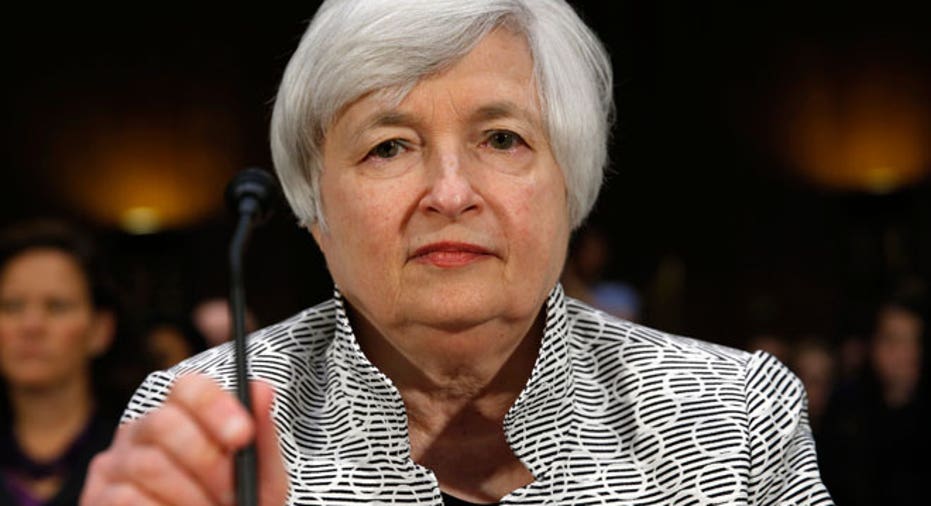Despite Volatility, Ebola, Fed Likely to Stay the Course

Despite recent market volatility, concerns for a global economic slowdown and the ongoing Ebola scare, the Federal Reserve is widely expected to stay the course this week, phasing out monthly bond purchases and laying the groundwork for higher interest rates.
The policy-setting Federal Open Markets Committee meets Tuesday and Wednesday and will release a statement at the conclusion of the two-day meeting.
FOMC members have made it clear for months that they planned to end the monthly bond purchasing program known as quantitative easing at their October meeting. Since late last year the Fed has been scaling back the program by $10 billion each month, whittling it down to its current level of $15 billion.
Two weeks ago amid some of the sharpest market volatility in the past three years St. Louis Fed President James Bullard suggested the central bank should delay phasing out the remaining $15 billion in bond purchases in an effort to maintain inflation at its current level.
Bullard’s comments had a temporary calming effect, but markets eventually straightened themselves out and the volatility that daily sent stocks all over the map earlier this month has dissipated.
Analysts believe the Fed is concerned that shifting its long-stated policy of ending quantitative easing in October would send the wrong message to markets, one that would suggest the economic recovery remains too fragile to remove QE.
At the same time, markets would probably react positively to such a move, pushing stock prices higher and leaving the Fed vulnerable to criticism that its long-running stimulus programs are paving the way for dangerous asset bubbles.
The Fed initiated the last of its three QE programs in September 2012, purchasing $85 billion each month in Treasuries and mortgage-backed securities in an effort to pump money into the economy and keep interest rates low to spur borrowing. The Fed announced in December that it would phase the program out gradually over the course of 2014 as long as the economy continued to recover.
Since then the unemployment rate has dropped significantly to 5.9% in September, its lowest level in six years, and throughout 2014 the U.S. has averaged more than 200,000 new jobs created each month.
So with the quantitative easing issue all but settled, the Fed will turn all of its focus toward the timing and trajectory of interest rate hikes.
Everyone’s waiting for the Fed to remove the phrase “for a considerable period” from the language contained in the statement released after its monthly meeting. For months the Fed has said interest rates will remain at their current near-zero range “for a considerable period” after quantitative easing is phased out.
The statement represents the Fed’s longstanding dovish tone, suggesting that policy makers are in no hurry to move rates higher and make borrowing more expensive, a move that could conceivably add another roadblock to the long-awaited economic recovery.
But the economy has been gradually recovering and an increasingly vocal group of Fed inflation hawks has been warning that if rates are held low too long the U.S. risks runaway inflation and the threat of new asset bubbles.
The hawks want the “for a considerable period” phrase removed from the Fed’s statement to provide markets with a clear message that rates are moving higher sooner rather than later.
Inflation has barely budged in months, however, remaining well below the Fed’s 2% target rate. Consequently, the inflation doves are likely to win again this month and the “for a considerable period” phrase is likely to remain in the statement.
Fed Chair Janet Yellen, a dove who leads the Fed’s dove majority, has said the Fed won’t raise interest rates until the Fed meets its dual mandate of full employment and price stability. The Fed has defined that dual mandate as an unemployment range of 5.2%-5.6% and an inflation range of 1.7% and 2%.
In short, the Fed’s October statement will probably sound a whole lot like the September statement. Policy makers will once again state emphatically that future policy shifts – ie., a rate hike – will depend on the progress of economic data. If the data is good, rates will move higher accordingly. If the data falls off again, the Fed will readjust accordingly.
In other words, the Fed will reassure markets that the central bank is doing everything it can to promote the economic recovery and won’t jump the gun on any policy shifts that could derail that effort.